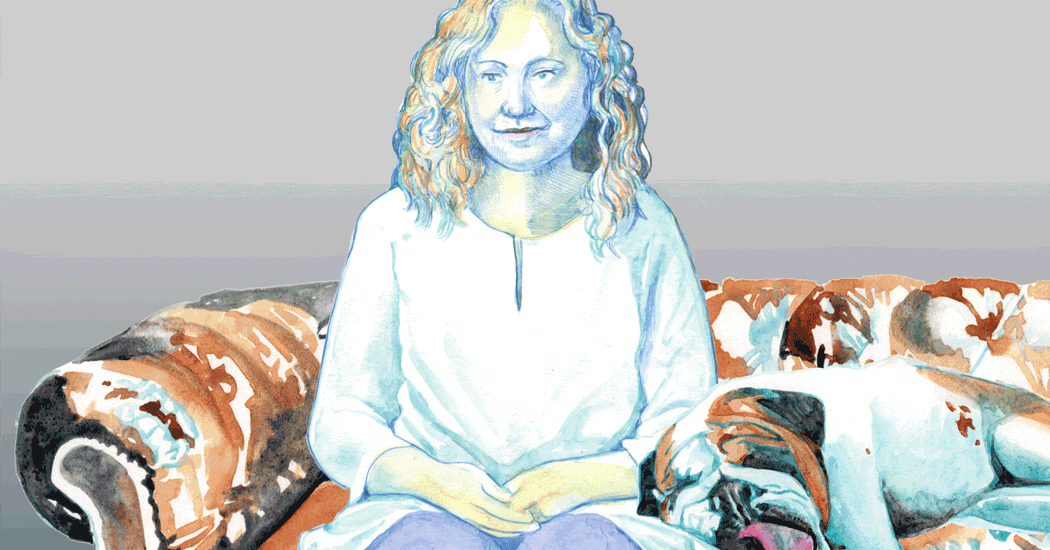
Maybe it’s the winter, or maybe it’s my own reluctance to leave my apartment, but lately I’ve been intrigued by the idea of a home practice — something like yoga or meditation that I do on my own, for myself, wherever I am, whether I’m in the mood or not. I like the lack of performance or flashiness. I meditate at home from time to time via an app or take the occasional class, but nothing has been consistent. So, recently, I decided to take up meditation.
My friend Karyn has practiced Transcendental Meditation (TM) for some time and compared her teacher Peter Lamoureux at the David Lynch Foundation (it was founded by the director, who has been a vocal proponent of TM) to the ideal dad. This for some reason made me think he would look like Elliott Gould.
When I met up with Mr. Lamoureux for our first one-on-one session on a Friday afternoon at the foundation’s Midtown offices, I learned he didn’t resemble the actor — less swarthy, for one. He was also a motorcyclist and an investment banker with several adult daughters whom he spoke of in loving terms. I immediately felt the desire to hug him and tell him all my problems.
The TM technique was brought to the United States in the late 1950s by the Maharishi Mahesh Yogi, a diminutive man with an abundant beard who would teach the Beatles and became synonymous with a countercultural desire to expand one’s mind. Many a celebrity followed in their footsteps and learned TM — among them Jerry Seinfeld, Robin Roberts and Katy Perry, who told Vogue: “I will feel neuro pathways open, a halo of lights. And I’m so much sharper. I just fire up!”
Could TM give me the artistic vision of George Harrison? Could it at least help me have less constant anxiety?
The TM course takes place over four days, and the first session is private. I met Mr. Lamoureux, talked about my life, answered questions and went to a small room for puja, a ritual performed in front of an altar adorned with fresh flowers and fruit. I knelt next to Mr. Lamoureux as he chanted in Sanskrit, feeling excited and a little nervous. I love a little pomp. Soon he began to chant a two-syllable word that I was asked to repeat, which became my mantra. How it was chosen I’m not to know, and I was sworn not to tell anyone what mine was.
We sat down in arm chairs, and Mr. Lamoureux instructed me to say it more and more quietly until it was silent — it became a sort of whisper in my mind. I closed my eyes and was left alone to meditate for about 15 minutes, after which he came back in to check in on how it went. I was instructed to go home that evening and try it on my own for 20 minutes. I fell asleep on my first try.
The next morning I returned to the Midtown offices for the first of three two-hour group sessions. There were six of us, three men and three women, ranging in ages from 20s to 60s, and we had all gone through the same initiation ritual.
By that morning, I had forgotten my mantra (which happens to be a joke in “Annie Hall”).
After a refresher on that, we went through health benefits of TM, including a study in the American Journal of Hypertension that suggested it lowered blood pressure. At the end we would all meditate together. The subsequent sessions followed the same format, with all of us sharing how our meditations were going, troubleshooting things like noisy spouses or boredom or, in my case, always falling asleep.
The advice was usually centered around the idea that we weren’t supposed to force anything. Thoughts weren’t just avoidable, but part of the process. If I fell asleep, I wasn’t supposed to resist it. Return to the mantra when you realize you’ve strayed from it.
We watched an old video of Maharishi saying the key was to take it easy. Mr. Lamoureux was fond of saying, with a friendly chuckle, “If you’re too busy to meditate, you’re too busy.”
After I attended all four sessions, I was off and meditating on my own. Apart from a few days with the flu, I didn’t miss a session. I surprised myself at how much I stuck to it. I almost never felt the zing that Katy Perry seemed to experience during her sessions, but I meditated for 20 minutes every morning and afternoon, on gym floors and airplane seats and my sofa, with my dog napping next to me. It became a practice, a thing I did whether I felt in the mood or not.
“I don’t go by mood or circumstance. I just do it like brushing my teeth,” Mr. Lamoureux told me when we checked in after I had been meditating for a couple weeks.
Sometimes I meditate and all I do is have thoughts racing through my mind. But letting them just happen and not acting on them for 20 minutes at least has given me some perspective for the rest of my day. What if I let more of my thoughts just sort of travel in and out without taking the time to obsess over them?
David Lynch Foundation
Concept No-frills mantra-based meditation that takes 20 minutes, twice a day, anywhere you are. It’s beloved by celebrities, but don’t let that deter you.
Vibe A garden-variety Midtown office building that lacks the elaborate décor of some of today’s buzzy wellness clinics. Instead there’s a staff that seems genuinely devoted to teaching and will hold your hand through the learning process.
Cost Based on a sliding scale of income, from $500 to $960 for the course. There are discounts and scholarships for students, veterans, domestic abuse survivors and other populations.







